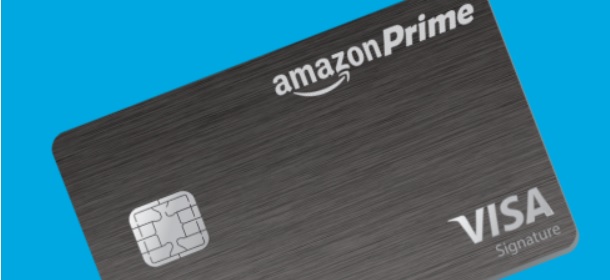NOTICE: This post references card features that have changed, expired, or are not currently available
 There was a time when the US Mint sold dollar coins online at face value, with free shipping, and allowed customers to pay with credit cards. The coins were incredibly popular. People bought the coins in huge quantities, paid with rewards earning credit cards, deposited the coins at local banks, and then used the banked funds to pay their credit card bills. This deal, for many, was the “manufacturing spend” opportunity of a lifetime. Unfortunately, the Mint’s goal of adding these coins to circulation didn’t pan out. Few people used them as intended. So, following media exposure, the Mint shut down the deal in 2011.
There was a time when the US Mint sold dollar coins online at face value, with free shipping, and allowed customers to pay with credit cards. The coins were incredibly popular. People bought the coins in huge quantities, paid with rewards earning credit cards, deposited the coins at local banks, and then used the banked funds to pay their credit card bills. This deal, for many, was the “manufacturing spend” opportunity of a lifetime. Unfortunately, the Mint’s goal of adding these coins to circulation didn’t pan out. Few people used them as intended. So, following media exposure, the Mint shut down the deal in 2011.
The end of fee free Mint Coins didn’t end the practice of manufacturing spend. Far from it. But there was no longer one single unlimited and free approach. Instead, people branched out into many approaches: funding new bank accounts with credit cards; buying money orders; loading prepaid card accounts; etc. Then, in 2013, Visa and MasterCard gift cards suddenly became PIN enabled.
With the development of gift card PINs, the new standard for manufacturing spend went like this:
- Buy Visa/MC gift cards with a credit card. See: Best options for buying Visa and MasterCard gift cards.
- Liquidate gift cards. See: Beginner’s guide to buying & liquidating Visa & Mastercard gift cards.
Both steps (buying and liquidating) often incur fees, but it is usually possible to keep those fees low. As long as your total fees are less than 1%, the rewards earned from most decent credit cards are worth the cost. In some cases, credit cards offer far greater rewards (such as those that offer 5X rewards at grocery stores or drug stores), so it’s OK to spend more than 1% when manufacturing spend.
Shifting sands
The problem with the current state of manufactured spend is that there is no solid “current state”. I described, above, a general approach that many people use, but the specifics change every day: stores stop allowing credit cards to be used to pay for gift cards; options for liquidating gift cards dry up; and other manufactured spend opportunities, like REDbird, come and go. While new opportunities occasionally arise, the trend is unquestionably negative. Opportunities are dying faster than they appear.
Manufacturing spend with higher fees
As opportunities for low-risk and low cost manufactured spend dry up, those who want to continue manufacturing spend will have to look beyond the current standard techniques. One approach is to accept higher fees. As found in the post “How to increase credit card spend,” there are many options that include fees ranging from about 1.9% to 3%: pay friends with PayPal or Venmo; pay bills including mortgage and rent; pay taxes, etc.
The key to making the “higher fees” approach work is to make sure that you are earning rewards that outweigh those fees. For a nearly complete list of options for increasing rewards, please see: How to increase credit card rewards.
Update: The Barclaycard Arrival Plus offer reference below as since changed. See our Best Offers page for the current best offer.
A simple example of earning rewards that overcome high spend fees, is a new credit card signup bonus. Let’s take the Barclaycard Arrival Plus standard offer as an example: Earn 40,000 points after $3K spend in 3 months. Since this card offers 2 points per dollar everywhere, you should have a total of 46,000 points after meeting the minimum spend requirements. Points are worth 1.05 cents each towards travel (thanks to the 5% points rebate), so those 46,000 points are arguably worth $483 in travel. If you use a service like Plastiq to meet the spend requirements, you’ll pay 2.5% in fees. 2.5% of $3000 = $75. $75 is a cheap price to pay for well over $400 in travel.
Another common example is to use cards with great category bonuses. Take the Chase Ink business cards, for example. They offer 5 valuable Ultimate Rewards points per dollar at office supply stores, and for cell phone, cable, and internet services. Staples, which is an office supply store, sells Visa gift cards online with a 3% fee for $300 denomination cards and a 3.5% fee for $200 cards. If you have an easy and cheap or free way of liquidating those cards, then the 5X returns are clearly well worth the 3% to 3.5% cost. To see why Ultimate Rewards points are so valuable, see: Membership Rewards vs. Ultimate Rewards vs. ThankYou Rewards. Which is best?
Manufacturing spend with increased risk
Instead of accepting higher fees, another option for manufacturing spend is to accept higher risk. In return for accepting risk, you may actually make a profit in addition to earning credit card rewards. Some higher risk manufactured spend techniques include: reselling; making loans via credit card, and funding fantasy sports league play with credit cards.
- Reselling: The basic idea is to buy low, with a credit card, and sell high. Ideally you’ll either make a profit or earn enough points & miles to make up for any loss. Fulfillment by Amazon (FBA) is a key service to use to decrease the work involved. Obviously, reselling takes a lot of work and there’s always a risk of losing money. For more details about reselling, please see my recent post: Re-dipping my toes into reselling. Also check out these resell-focused blogs: Tagging Miles, Big Habitat, Oren’s Money Saver, Miles Per Day.
- Loans via credit card: I’m aware of two good options here. Kiva allows you to make microloans with a credit card with no fee. Unfortunately, they do not allow lenders to earn interest, so the best you can do is break even. For details, please see: Kiva: loans, points, and miles. Another option is Kickfurther (if you use this referral link, you’ll earn $5 to get started). Kickfurther is a platform that lets companies seek short term funding from the Kickfurther community by offering a return on investment (such as 8% profit in 10 months, for example). With Kickfurther, you will earn a profit with each offer that you fund as long as the company pays out as promised. You can fund offers with a credit card, but you’ll be penalized 1.5% when you withdraw funds to your bank account. One huge problem with Kickfurther is that the best offers tend to be fulfilled within seconds of being active. You can read more about Kickfurther in this Kickfurther investment guide.
- Fantasy sports leagues: If you like the idea of sports gambling, read this Travel Summary post: A New Way to Manufacture Spend: Daily Fantasy Sports Leagues. I haven’t tried it. I’m not interested, but I expect many readers may be. Please take Travel Summary’s caution seriously: “If you have a gambling problem, stop reading this post and call 1-800-522-4700.”
Going forward
As options for low cost and low risk manufactured spend disappear, I expect that many readers will lose interest in manufactured spend. Personally, I don’t mind branching out. It is the higher fee and increased risk options that are most likely to stick around long term. The reselling option, in particular, seems like one that can never go away. Sure, opportunities for reselling at a profit may decline as more people get involved, but I don’t see that as a deal breaker. Reselling is just hard enough, and risky enough, to keep the hordes away. Now its time for me to dust off my old Amazon Seller account…





[…] the post, “Manufacturing Spend in 2016 and Beyond,” I gave a bit of history of manufactured spending. I showed that many of the techniques that […]
[…] #3 Credit Card Spend in 2016 and Beyond […]
Reselling – better sell something that is very unlikely to be returned, because returns mean it has to be sold as opened box next time around and lose will be enormous. I’d never resell electronics and I’ve heard Amazon’s FBA has history of losing packages. Just one screw up results in potential enormous lose so cross your fingers and toes.
[…] RadPad will charge 1.99% for MasterCard credit card payments, effective February 1, 2016. This is at the lower end of the higher fees kind of MS that becomes […]
Reselling is the way to go. I discovered it through your sites and some of the others you posted and its allowed my wife to quit her job to focus on it full time. Too me it is way too much work to “break even” to earn points. Plus there are so many great deals out there that there really is no reason not to make some serious $$$ while also grabbing extra miles/points for your traveling pleasure.
Can we use Forex investment trading brokers to meet minimum spend?
Would we actually have to trade, or could we find our account with credit card then transfer funds over to the bank?
I don’t know. Haven’t looked into that. My guess is that fees would be very high.
I think the primary concern would be foreign transaction fees. I’m not sure that there would be any other types of fees involved. And the Chase Sapphire card says it doesn’t charge foreign transaction fees, so perhaps that would be the way to go for that card?
I’m unsure. I’m just getting started in the manufacured spending game (with pretty bad timing apparently).
Yup, same email here. What’s left now?
Almost everyone with Bluebird or Serve got shut down. I think we can count Bluebird and Serve as dead effective today. My guess is that they looked for any accounts in which the majority of debits from the account were not from regular use (e.g. not from using it as a credit card for spend)
shoot … nice start to ms 2016 … bluebird just shut me down! am pretty low grade too … hardly ever reach the 5k
FTbb seems to be reporting similar …looks like its blackbird day folks
[…] Another technique bites the dust. I guess yesterday’s post was prescient: Manufacturing Spend in 2016 and Beyond. […]
I just received the same letter from Serve.
My usage pattern consists of the following:
Load $1,000 automatically every month from FIA AmEx in $200 increments each day at the beginning of the month.
Withdraw $50 to one bank account.
Pay bills until the remaining $950 is depleted.
That’s it. If that’s a suspicious pattern, then everyone must be guilty.
That’s so conservative that I don’t know how that triggered an audit.
Maybe they want at least a little card use at retail outlets.
Two of my serve accounts were also closed today. Is this the end?
Looks like AMEX is now cracking down. One of mine were closed today as well.
Looks like one of my Serve cards is now shut down. Not a good start to 2016:
“We are writing to let you know that we have observed unusual usage patterns on your American Express Serve Account. Because of this, effective immediately, you will no longer be able to add money to your Account.1 We have made this change in accordance with Section 15.d of our Consumer User Agreement, which you can view here.
Please be aware that you continue to have full access to the funds on your Account and can withdraw them at any time. Any applicable monthly fees continue to apply.
Once your balance reaches $0, please close your Account online via your Profile page accessible here. Scroll down to the Close Account section and click “Close Account.”
If you have any questions or would like to inquire further about this issue, you may write to us at the following address:
American Express
C/O Customer Relations 02-04-40
4315 S 2700 W
Salt Lake City, UT 84184-0440
Thanks,
The American Express Serve Team “
[…] Miler had a great post yesterday about Manufactured Spending in 2016 and beyond. The truth is, he’s right. Manufactured Spending has gotten harder. Great opportunities like […]
[…] A decent state of Manufacturing Spend address. By the Frequent Miler. Oh how we all miss the good old days. Now with so many blogs vying for click attention…it’s pretty awful out there, too much work […]